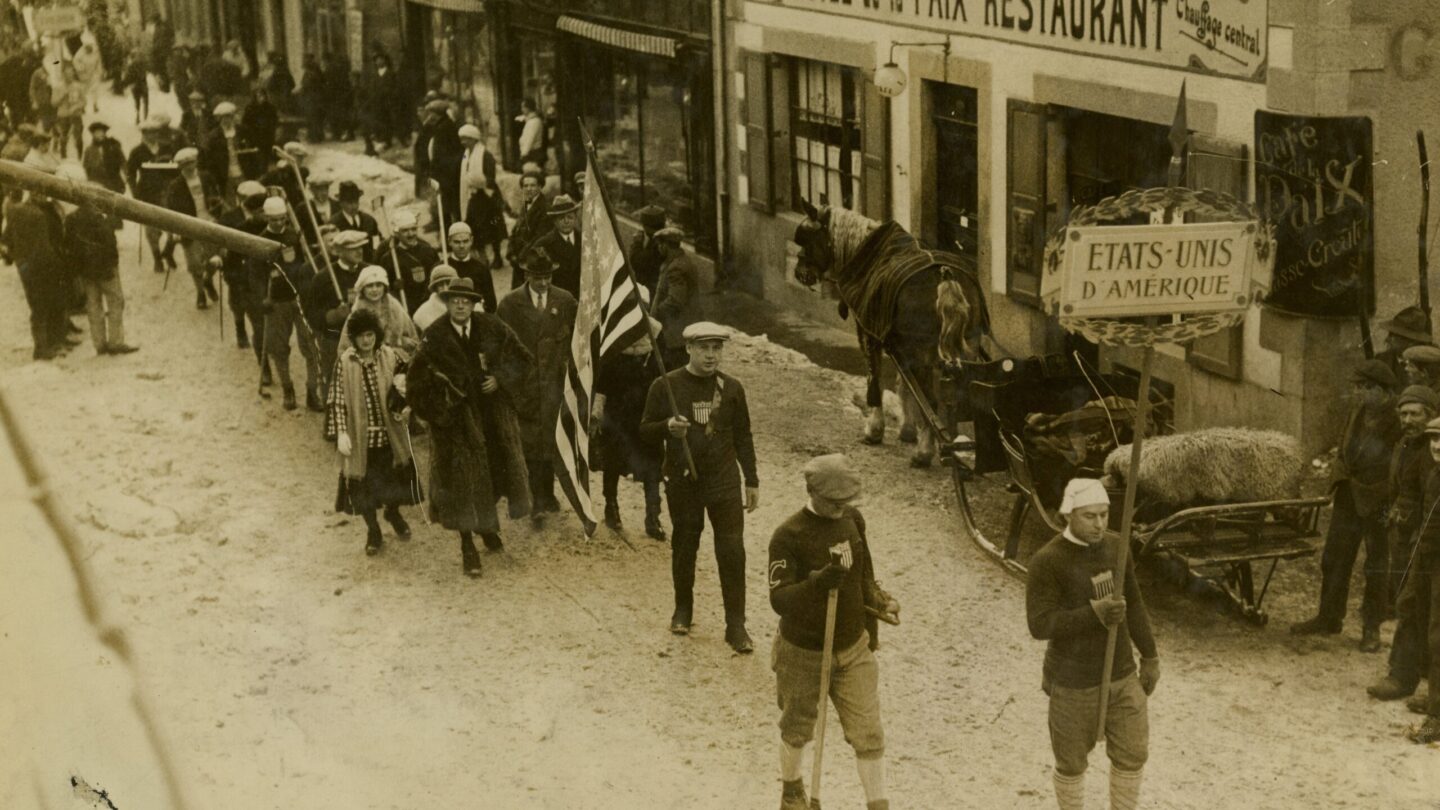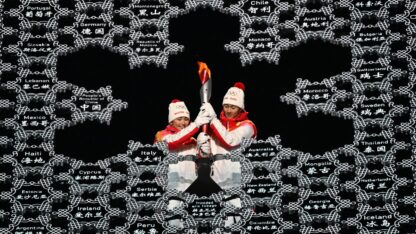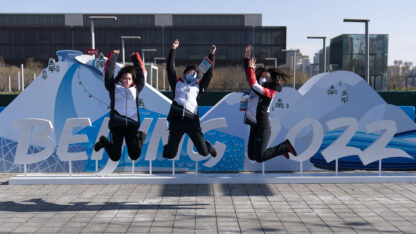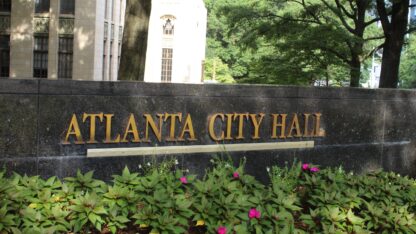At the 1924 Winter Olympics in Chamonix, France, about two dozen American dignitaries and athletes trudged through snowy streets in the opening parade. The American flag — then with just 48 stars — was carried by hockey player Clarence “Taffy” Abel.
What few outside his family and close friends knew at that time: Taffy Abel was Native American – the first Indigenous athlete to carry the flag at the Olympics. Within days he’d become the first Native American to win a medal in winter games history.
“A Native American, carrying our stars and stripes, nearly 100 years ago,” reflects George Jones, Abel’s 73-year-old nephew by marriage. His voice quivered with pride as he spoke of that moment.
Family stories passed down tell how Abel, his sister Gertrude, and his mother Charlotte – a Canadian Chippewa (now called Ojibwe) – all passed themselves off as white, mostly by not talking about it.
“The main thing that they were fearful of,” says Jones, “[was] that Taffy and his sister would be taken away to an Indian residential school.”
Such schools were one way the United States tried to eradicate Indigenous heritage from Native people.
John Abel was white, and before the Indian Citizenship Act of 1924, his marriage to Charlotte made her and their children U.S. citizens. Charlotte’s father worked at the Sault Ste. Marie locks, and the family lived in town, not on the reservation. He was, Jones says, “a little bit better educated than the average Native American who lived on a reservation there.”
John and Charlotte lived in town as well, and by ‘downplaying’ the Native American heritage in the family, Taffy and his sister went to the local public school. John died in 1920, leaving Taffy as the family breadwinner.
“I think it was kind of an open secret,” says Jim Adams, senior historian with the Smithsonian’s National Museum of the American Indian.
In many American communities near Indigenous lands, the practice of ‘racial passing’ was fairly common. If you could, you just didn’t talk about it.
Adams says census documents showing today’s Native population is about 20 times what it was in 1890 isn’t because of regular demographic growth.
“It’s because people were hiding their Indian identity in a period when it was a definite disadvantage,” he says.
In 2012, Adams curated an exhibition at the National Museum of the American Indian honoring Indigenous Olympians. While racial passing was common among Native Americans, it was more rare for Olympic athletes.
“A lot of the competitors, like Jim Thorpe and Louis Tewanima, were sponsored by Carlisle Indian Industrial School. So their identity as both Indian, and as products of the Indian boarding school system, was very well known and in fact, quite publicized,” Adams explains.
Thorpe was the first Native athlete to win gold at an Olympic games, winning both the decathlon and pentathlon in the 1912 Stockholm games.
Jones, Abel’s nephew, doesn’t think success would have come as easily to his uncle.
“Taffy would have never got into the 1924 Winter Olympics if he would have [come] right out and said, Hey, I’m Native American,” Jones believes. “And I know he wouldn’t have got into the white-dominated NHL hockey world either.”
After helping the U.S. to a silver medal in the 1924 Olympics, Abel would later join teams in the National Hockey League. He won the Stanley Cup twice: with the New York Rangers in 1928 and the Chicago Blackhawks six years later. His size and toughness made him a dominant player; he was known as a ’60-minutes’ man because he rarely left the ice.
Padding was minimal and helmets didn’t exist. “So these were tough guys, and he was kind of the toughest of the tough,” Adams says of Abel.
After his NHL days ended, in 1939 Abel formed an amateur hockey organization back home in Michigan, named the Sault (soo) Indians in honor of his late mother. That was the moment his heritage was out in the open, though even minimal recognition of his efforts as a Native American was still decades away.
“When somebody would ask him, they would say: ‘Taffy, what business [are you] in?’ Taffy would always say: ‘I’m in the business of winning,'” Jones says.
Abel was among the first to be inducted to the US Hockey Hall of Fame in 1973, and the American Indian Athletic Hall of Fame in 1989.
And while Canadian Fred Saskamoose is widely credited with being the first Native player in the NHL in the 1950s, both Jones and Adams said it was Taffy Abel a quarter-century earlier.
Jones has long advocated for more recognition of Abel’s Olympic accomplishments, and his place as the NHL’s first Indigenous player.
Michigan Congressman Jack Bergman in January rose to recognize Abel on the floor of the U.S. House of Representatives, and, working with Jones, intended to declare February 4, 2022 ‘Taffy Abel Day.’ (Bergman’s proclamation today was instead pushed by other House business to Monday, February 7).
“To me,” Jones says, “the big issue here is not so much about Taffy Abel, but it’s Native American justice. If it doesn’t happen on my watch, you know, I got a son. He’ll follow up. And I got grandsons, and they’ll follow up.”
Jones also hopes for the return of Abel’s 1924 Olympic Silver Medal, which he says was stolen from the family home in 1964.

9(MDAxODM0MDY4MDEyMTY4NDA3MzI3YjkzMw004))








